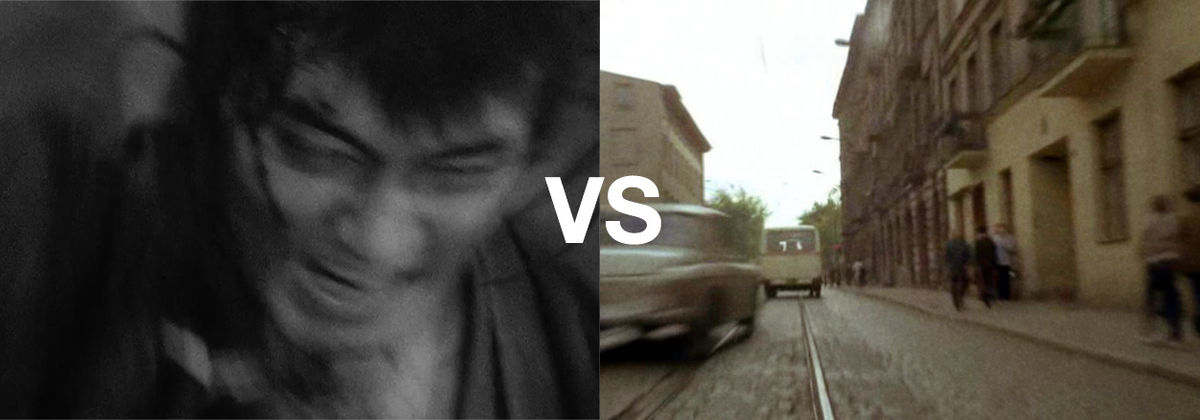Motion blur et al.
on creative uses of motion blur, frame rate, etc.
selected samples:
- the sword of doom (original title: 大菩薩峠, the great buddha pass), kihachi okamoto, japan, 1966.
- oh, i can’t stop! (original title: oj! nie moge sie zatrzymac!), zbigniew rybczyński, poland, 1975.
the films deal with representation of devastating forces on a path to relentless destruction. in both works there’s a clearly defined sense of fatality in how, once set in motion, destructive tendencies in society ultimately lead to catastrophe. the ways the two directors deal with the theme visually is however extremely different. while in okamoto’s film motion blur is essential to convey an ever increasing sense of frenzy, rybczyński opts for the technique of pixilation, which makes the live-action footage akin to stop motion animation, to confer to it a caustic tone.
for okamoto—who was one of the many young men sent to fight in world war ii and who directly witnessed its horror—unbridled brutality is always the consequence of surrendering one’s rational side. the evil that brutality and its consequences imply remains however a personal moral choice. the sword of doom’s ryunosuke consciously chooses a ruinous path and decides to use his skill as an instrument of misery, to satisfy his cruel tendencies rather than to employ it at the service of others—and therefore to better himself. from the very beginning it is clear that his choice will be damning. the escalating madness that like a maelstrom engulfs ryunosuke's character in the last sequence of the film is accentuated by the increase of motion blur, with aid from use of focus, editing and elaborate choreographies. the duration of the sequence reinforces the sense of violence-induced drunkenness, with action becoming more and more exaggerated and absurd until being cut off abruptly at its peak. the blurry freeze frame which concludes the film, which stops ryunosuke at the absolute climax of his furor, is therefore not only an emblematic choice of style, but also a necessary ending from a narrative perspective.
conversely, rybczyński chooses a less immersive approach to build his short film. having experienced the oppressive climate of communist poland, rybczyński uses animation techniques creatively for their satirical qualities. the spectators of oh, i can’t stop! identify their point of view with that of the unknown monster-creature, which also coincides with the eye of the camera. however, rybczyński gives them the means, through the combined stuttering effect of pixilation and grotesque soundtrack, to recognize the whole as a bizarre, fantastic situation and therefore to maintain a safe critical distance from the images. through the advance of the monster-camera the spectators are presented with an accurate even though compressed portrayal of poland in the '70s, of its demographic and geographic conditions; but they’re also given an idea of the socio-political lunacy enveloping it. in a manner not dissimilar from the surrealist works of buñuel or švankmajer, rybczyński uses his film as a commentary on the situation of his country at the moment of its making.

